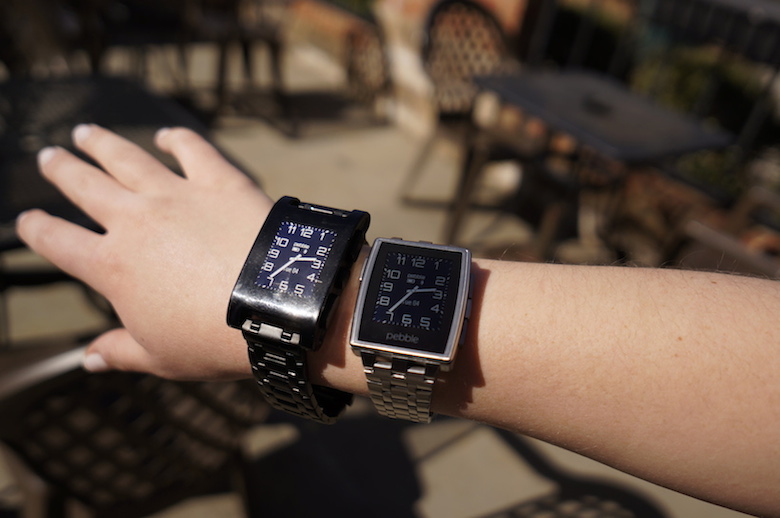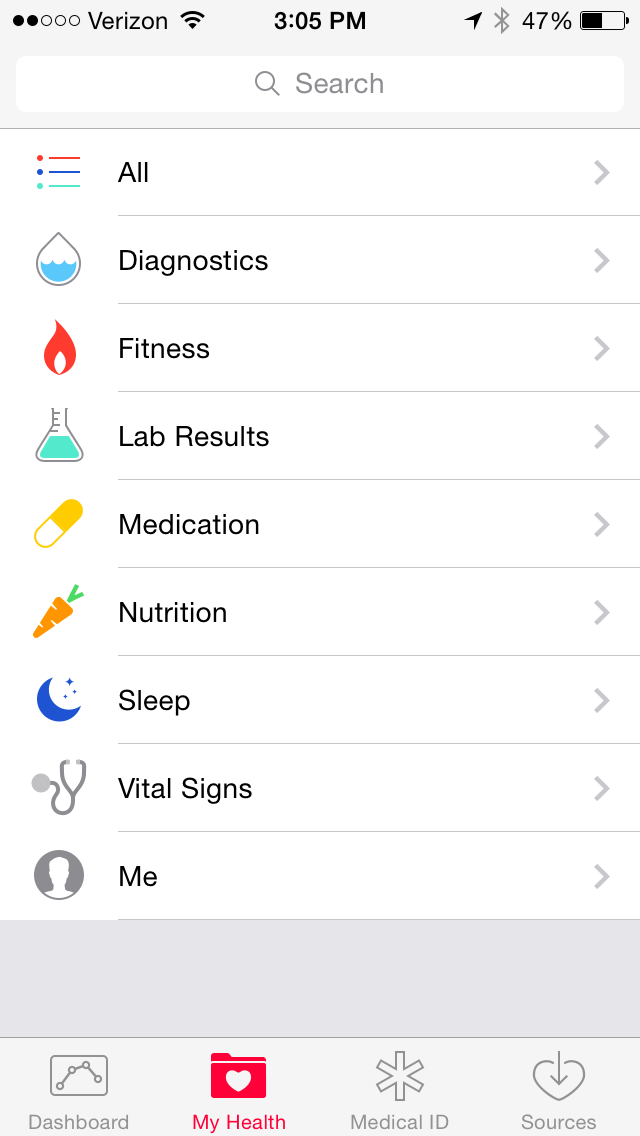
Roughly 18 months ago, smartwatches and other types of wearables were practically nonexistent.
Sure, the Nike FuelBand started hitting shelves over two years ago, and a few fitness bands followed thereafter. But it was nothing to the degree it is today. FitBits are everywhere; I see random passersby wearing Pebbles; people ask me all the time if my “watch that buzzes” is “one of those Samsung things”; and it seems everyone is aware of the early onset #glassholes of this world.
Wearables – especially smartwatches – are more in the public eye than ever, and some of the biggest companies in the tech industry are on the brink of diving into wearables head-first.
 If we’re talking about the broad wearables category, FitBit owns the space with nearly 50 percent of gloabal wearable market share as of last month. If we narrow the scope to just smartwatches, however, it’s Pebble’s game. The startup is faring well against its much larger competitors with 35 percent of the global smartband market share, while Sony snapped up 29 percent and Samsung slipped to 23 percent.
If we’re talking about the broad wearables category, FitBit owns the space with nearly 50 percent of gloabal wearable market share as of last month. If we narrow the scope to just smartwatches, however, it’s Pebble’s game. The startup is faring well against its much larger competitors with 35 percent of the global smartband market share, while Sony snapped up 29 percent and Samsung slipped to 23 percent.
The real question is how these companies will fare and how the market share will change once the real heavyweights jump on the market.
We’re just weeks away from the official unveiling of the first Android Wear hardware; LG and Motorola are confirmed to be bringing Android Wear watches sometime this summer. Apple is rumored to be making its own smartwatch, as is HTC, and likely every other major company in the industry.
One thing is certain: the space is about to get very crowded with very similar (but probably marginally different) options. Looking back at the start of this wearables revolution, it hasn’t quite gone how I would have expected.
I closely followed the progression of the Allerta inPulse smartwatch. It filled my mind with all the possibilities of a smartwatch: voice calls, Google searches, a wrist-mounted TV remote, and so much more. The possibilities are literally endless, and the Pebble Appstore has begun to show us just how valuable a smartwatch can be. I sync some of my most important notes in Evernote to my Pebble Steel; I have a watch app that gives me the current weather and forecast for my current location and a set location; I can track packages from the Pebble Steel; I can track my sleep; I can follow my favorite teams using the ESPN app; I can find nearby locations using Yelp; and I can control my music. I can do all of this from my wrist, without having to pull my phone out of my pocket.

That said, the brunt of the upcoming smartwatches will not be capable of doing all these seemingly simple things.
At least in the beginning, all the Android Wear watches will have two main functions: deliver notifications to your watch and provide a stellar, always-on Google Now experience on your wrist.
Not every manufacturer will choose Google’s watch-based OS to power their wrist-mounted computer, however.
Samsung will likely continue to develop its Tizen-powered Gear watches, and Apple will likely use a lightweight version of iOS to power its still-not-official watch. And I’m sure some smaller startups will jump on the wearables bandwagon soon enough and not want Google’s software to power its users’ experience.
I wonder, if not notifications or the simple tasks from above, what purpose will these future watches serve?
With Samsung’s newest iteration of Gear watches, the focus was primarily fitness. The Gear 2, Gear Neo, and Gear Fit all come with heart rate monitors built into the wrist-side of the watch. And while they’re perfectly capable of doing other things, fitness is what they’re best at – pairing up with an Android-powered Samsung phone, syncing with the S Health and Coach by Cynga apps, and helping you track your health and fitness progress.
Apple, having just added HealthKit to the new iOS 8 update (and having hired several medical technology experts), certainly foreshadowed one of the primary focuses of its alleged upcoming smartwatch. If you take a gander at the Health app in iOS 8, you’ll find all sorts of data sets like blood alcohol content, blood glucose level, oxygen saturation, and sleep analysis. While many of the data types included in the Health app are far above and beyond what any other company is currently providing in its wearable fitness band, making a smartwatch and making health tracking its main function is a major cop-out.
Health bands are a dime a dozen these days. To a certain degree, they all do the same thing. They try to bring awareness of you health and fitness into the foreground, even if how they do it differs. FitBit and the FuelBand both gamify fitness by enticing you to compete with friends on things like steps or calories burned.
I can’t help but feel Apple’s incarnation of the smartwatch will take inspiration from the typical fitness bands and push the concept a bit further by cramming in more sensors and gathering more data.
That’s great for gym nuts. But for everyone else who just wants an awesome smartwatch with functionality outside the gym or a watch that doesn’t constantly make them feel like a miserable fat sack who can’t seem to gain control over their eating habits (sometimes guilty myself), the alleged iWatch will likely be another “me, too” fitness band with a few additional functions, like music or Siri controls.
I’d rather see Apple push the envelope by bringing some of the more futuristic smartwatch feature concepts to life, to make it a true smartwatch first and a fitness band second.
However, I feel that’s not going to be the case. Based on HealthKit and the way the wearables market is headed, Apple will likely just hop on the fitness bandwagon and put the more intriguing and appealing smartwatch possibilities on the back burner.
If that’s the case, the whole wearables landscape could change into fitness-focused wristbands instead of the cool, nerdy, wrist-mounted utilitarian devices they should be.


No comments:
Post a Comment